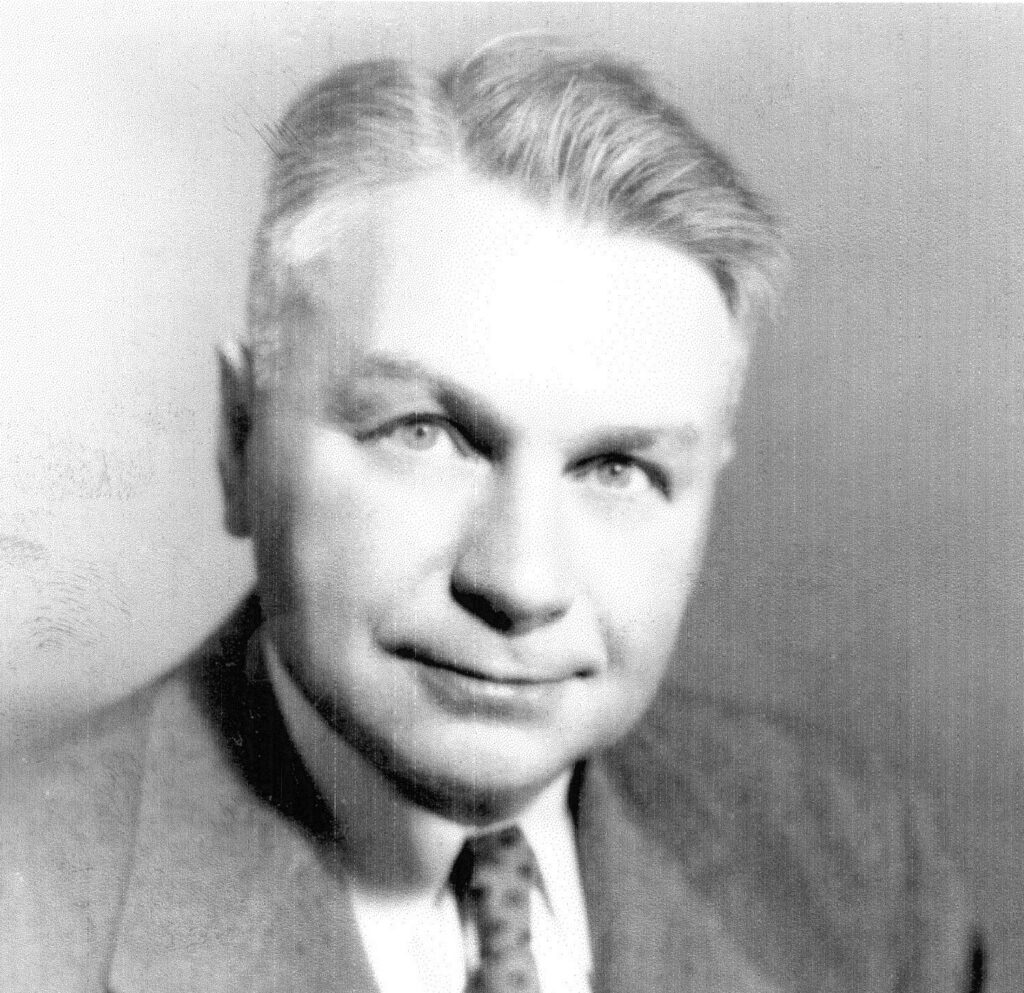Jerome “Jerry” Lederer was born on September 26, 1902, in New York City. He became interested in aviation as a child, in part after seeing just the second aviation tournament ever held in the United States, in 1910. He received a Bachelor of Science degree in Mechanical Engineering with aeronautical options in 1924 from New York University. In 1925, he earned a Master of Science degree from New York University (NYU).
Lederer was then appointed an assistant to the Director of Aeronautical Engineer and was responsible for the construction, calibrations, and operations for the wind tunnel at NYU. In 1926, he became an aeronautical engineer for the United States Air Mail Service, the world’s first successful system of scheduled air transportation. Lederer designed aircraft modifications to help prevent accidents and reconstructed crashed aircraft to determine why they had crashed.
He was a life-long friend of Charles Lindbergh and on the day before Lindbergh began his historic solo across the Atlantic in May 1927, Lederer inspected Lindbergh’s plane, the “Spirit of St. Louis” at Roosevelt Field, New York. He later admitted, “I did not have too much hope that he would make it. I just went out because I was a friend of his, and I wanted to see the airplane, to look the situation over.” Lederer was soon appointed the first Director of the Safety Bureau of the Civil Aeronautics Board (forerunner of the National Transportation Safety Board). Soon after, following the ferment in aviation inspired by the Lindbergh flight, Mr. Lederer became a consultant to several airplane manufacturers.
From 1929 to 1940, Jerome Lederer was a chief engineer for pioneer aviation insurance underwriters. At the request of the Civil Aeronautics Board in 1940, he took leave to accept appointment as the first Director of its Safety Bureau, in charge of all civil aviation safety regulations and the investigation of all civil aviation accidents.
He resigned in 1942 to assist in war-related activities as the director of the Airlines War Training Institute. He was also Safety Consultant to the Army’s Second Air Force. During the Second World War, Lederer trained some 10,000 airmen and 35,000 mechanics in fourteen months for the Air Transport Command.
In 1947, he organized the Flight Safety Foundation and was its director until his retirement in 1967. Lederer developed most of the programs for which it is noted, such as the worldwide exchange of prevention information, research projects and safety seminars. In 1950 he set up the Cornell-Guggenheim Aviation Safety Research Center for the international exchange of information on research in aviation safety, serving as its director until 1967 as well. In 1956, Jerry Lederer served on the presidential commission that organized the U.S. Federal Aviation Authority, now the Federal Aviation Administration (FAA).
In 1967, following the deaths of the three Apollo 1 astronauts in a launch pad fire at Kennedy Space Center, Florida, NASA appointed Jerome Lederer Director of the Office of Manned Space Flight Safety for the Apollo Program. He had already earned the unofficial title “Mr. Aviation Safety” among his peers and was internationally recognized as the leader in that field.
From 1970 until 1972, Jerome Lederer was responsible for the safety of all NASA activities, including space and aircraft operations, industrial safety, fire, and vehicular safety. After his retirement from NASA in 1972, he dedicated much of his time to the investigation of unique and challenging safety problems, such as substance abuse, and subtle cognitive incapacitation of pilots, cockpit boredom, and interpersonal communications.
Among the numerous awards Jerry Lederer earned were the NASA Exceptional Service Medal, the NASA Group Achievement Award, Ziolkoski Gold Medal of the Soviet Federation of Cosmonauts, the FAA Distinguished Service Medal, the Wright Brothers Memorial Award, the Edward Warner Award, the Von Baumhauer Medal of the Royal Dutch Aeronautical Society, and the Howard B. Drollinger Lifetime Achievement Award. Jerome Lederer was an honorary member of the Airline Pilots Association and of the Air Traffic Controllers Association.
The International Society of Air Safety Investigators established the Jerome F. Lederer Award on October 6, 1977, for outstanding lifetime contributions to technical excellence in aircraft accident investigation. In November 2002, Embry-Riddle Aeronautical University conferred a Doctorate of Safety Science on Mr. Lederer in recognition of his lifetime of dedication to aviation safety.
Jerome F. Lederer, champion of a number of aviation safety measures still in use throughout the air carrier industry, died on February 6, 2004, in Laguna Hills, California. He was one hundred and one years old.

